|
Swans M1 ReWorked I bought the HiVi RT1C-A planar tweeter in 2010. Over the years, I tried her with different midwoofers but I’ve never been completely satisfied mainly because the midrange doesn’t stand out enough. Hopefully this HiVi F5 will give me the vocals that I’m after.
The plots in Fig 1 are the RAW responses of the HiVi F5 and the RT1C-A in a 13 liters bass reflex with a baffle width of 8-1/2″. From my previous post of the F5, her breakup starts at 5kHz. Normally, I would cross at between 2kHz~2.5kHz which is well away from the cone breakup but with the RT1C-A, I have to cross at 3.5kHz. This is dictated by the RT1C-A as she cannot go any lower.
The Blue plot in Fig 2 is the F5 with a 2nd order low pass filter. The peak at 6kHz is now suppressed by 20dB. This is vital for the performance of the treble.
The Black plot in Fig 3 is the RAW response of the RT1C-A. The Red plot is with a 2nd order high pass at fc of 3.5kHz. I adjusted the sensitivity with an L-pad to match that of the HiVi F5.
Fig 4 is the F5 and the RT1C-A with their respective filters. Acoustically, they are crossing at my targeted crossover frequency of 3.5kHz.
The Black plot in Fig 5 is the crossover passband. No cancellations are observed on either side of the crossover frequency. This is an indication of good summing.
Fig 6 is the final frequency response of the Swans M1. There is a light emphasis from 1kHz~2kHz. I decided not to eq it flat because I expect the vocals will sound slightly forward which is what I want. The treble is flat from 3kHz~10kHz. I do not expect any grating highs with this response.
Fig 7 is the Null Response when the tweeter wires are flipped over. The notch at 3.5kHz is exactly where the F5 and the RT1C-A are crossing acoustically (Fig 4). The notch can be deeper with some delay added to the RT1C-A but as it stands, the Swans M1 sounds perfectly fine.
The Waterfall (Fig 8) shows the Swans M1 has an exceptionally clean treble. That’s the result of suppressing the cone breakup of the F5.
The Toneburst Energy Storage (Fig 9) plot is incredible. The Swans M1 exhibits very little stored energy (light blue slices). What this means is there’s hardly any artifacts in the treble.
The Spectrogram (Fig 10) is a 2D view of the Waterfall and the Toneburst plots. It shows energy above 2kHz doesn’t last more than 1.5sec.
The first peak in the Swans M1 Step Response (Fig 11) is that of the RT1C-A. It is followed by a second peak, which is the F5. From this step, we can see the F5 is behind the RT1C-A by about 250usec. I didn’t detect any issues during auditioning.
The 2nd Harmonic Distortion of the Swans M1 is 0.458%. 3rd Harmonics is at 0.523%. THD from H2-H9 is 0.956%. This may seem a bit high but during listening tests, my ears were not irritated. So this is academic.
The Swans M1 is not a demanding load for power amplifiers. Most of the time the impedance is above 8Ω (Fig 11). It only dips to 5Ω at 10kHz. Box tuning is at 55Hz. Sound of Swans M1 Reworked The vocal clarity of the Swans M1 is astonishing. In Diana Krall’s Girl In The Other Room, she sounds as though she’s singing right in front of you. There’s no boxiness in her voice. Sibilance is well controlled. Dean Martin’s Innamorata will melt any woman’s heart with the Swans M1. It’s emotive. For bass, I played Santana’s Maria Maria. The bass can be clearly heard. Tight and not flabby. The way I like my bass to sound like. Summary After more than 10 years, I finally found the correct midwoofer for the RT1C-A. The HiVi F5 can be a challenge to work with. If one is not careful, the vocals will end up “shouty”. However, if you get it right, the speaker sounds wonderful. Unless otherwise stated, all measurements were made in Full Space (4 pi) with the mic at 36 ins, tweeter axis. Impulse Window=5ms. No smoothing applied. |

August 20, 2023HIFI DRIVERS, Projects
 Fig 1 – HiVi F5 and RT1C-A RAW Responses
Fig 1 – HiVi F5 and RT1C-A RAW Responses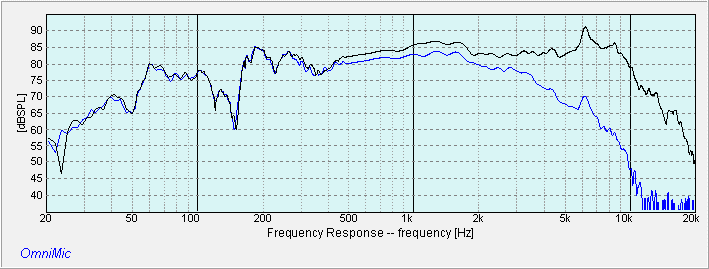 Fig 2 – HiVi F5 with Low Pass Network
Fig 2 – HiVi F5 with Low Pass Network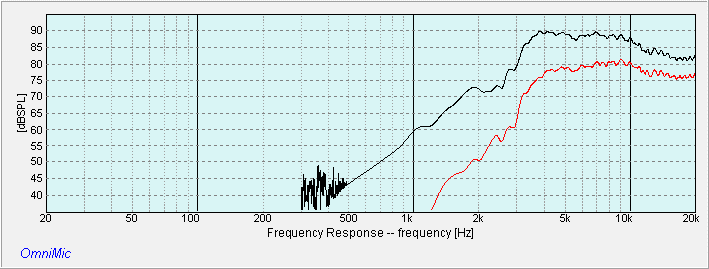 Fig 3 – HiVi RT1C-A High Pass Network
Fig 3 – HiVi RT1C-A High Pass Network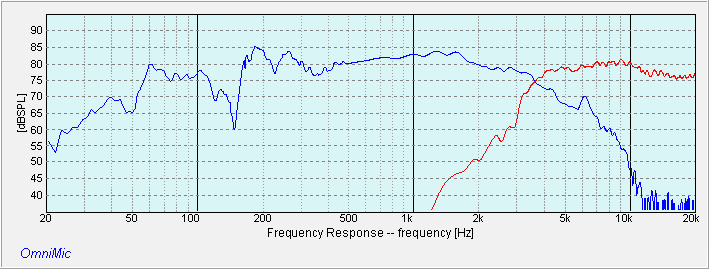 Fig 4 – HiVi F5 LP with RT1C-A HP
Fig 4 – HiVi F5 LP with RT1C-A HP Fig 5 – PassBand
Fig 5 – PassBand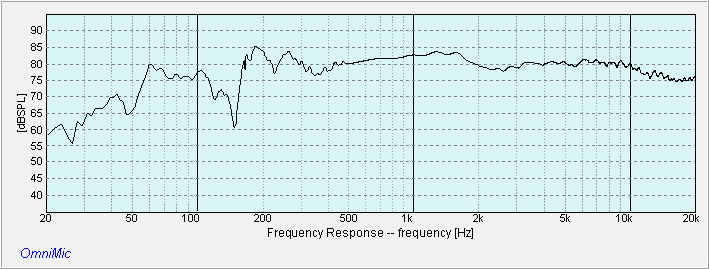 Fig 6 – Swans M1 Frequency Response
Fig 6 – Swans M1 Frequency Response Fig 7 – Swans M1 Null Response
Fig 7 – Swans M1 Null Response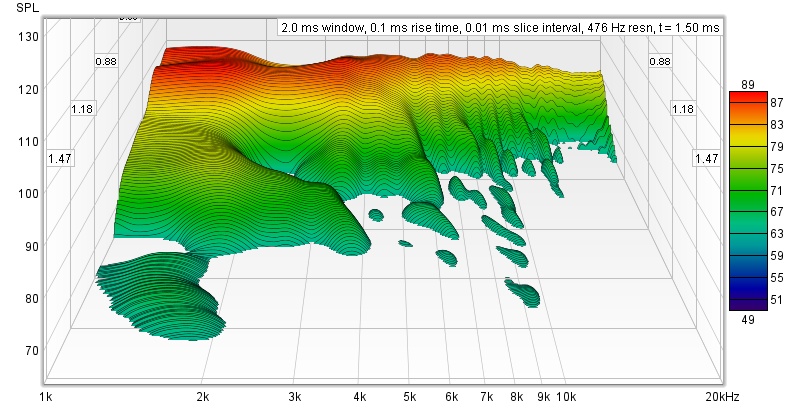 Fig 8 – Swans M1 Waterfall
Fig 8 – Swans M1 Waterfall Fig 9 – Swans M1 Toneburst Energy Storage
Fig 9 – Swans M1 Toneburst Energy Storage Fig 10 – Swans M1 Spectrogram
Fig 10 – Swans M1 Spectrogram Fig 11 – Swans M1 Step Response
Fig 11 – Swans M1 Step Response Fig 12 – Swans M1 Distortion
Fig 12 – Swans M1 Distortion Fig 13 – Swans M1 Impedance
Fig 13 – Swans M1 Impedance